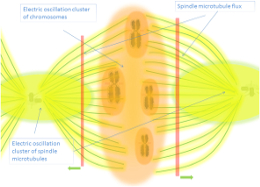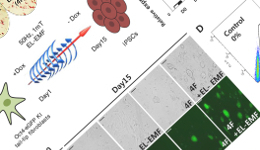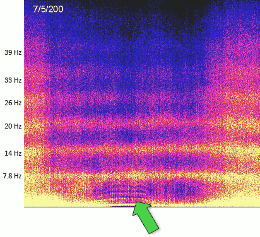

Biophotons Coherence & Statistics
Possible coherent properties of this internally generated light is discussed
Biophotons, ultra-weak photon emissions from living systems, exhibit coherence and complexity patterns that provide insights into biological organization and systemic regulation. Recent studies have highlighted their role in phase transitions, information transfer, and complexity dynamics, particularly in processes like seed germination and cellular signaling. ...
This section synthesizes experimental findings and theoretical frameworks, emphasizing the statistical properties of biophoton emissions and their implications for biological coherence, communication, and health
Biophotons are coherent, ultra-weak emissions of photons produced by living systems, spanning ultraviolet to visible wavelengths. Beyond their role as byproducts of metabolic processes, biophotons are integral to cellular communication, systemic regulation, and complexity dynamics. Recent advancements in biophoton research have focused on their statistical properties and coherence patterns, providing new perspectives on biological phase transitions and information processing. This section explores the interplay between biophoton coherence, statistical properties, and biological complexity.
Biophoton Generation and Coherence:
Sources of Biophotons:
Biophotons are primarily generated by metabolic and oxidative processes, with DNA and mitochondria being significant sources (Langer & Langer, 2023).
The coherence of biophoton emissions is attributed to quantum mechanical interactions and structured cellular environments (Popp et al., 2008).
Role in Biological Coherence:
Coherent biophoton emissions facilitate long-range interactions and energy transfer, aligning cellular activities within and across systems (van Wijk et al., 2010).
Biophotons contribute to the synchronization of biological rhythms, such as circadian cycles and tissue repair processes.
Statistical Properties and Complexity Dynamics:
Phase Transitions in Biological Systems:
Biophoton emissions undergo phase transitions during critical biological processes, such as seed germination, indicating shifts in systemic complexity (De Paolis et al., 2024).
These transitions are characterized by changes in spectral components and emission intensities, reflecting underlying biological reorganizations.
Complexity Patterns:
Complexity matching theory suggests that biophotons encode information through patterns of coherence and randomness, extending beyond classical thermodynamic equilibrium (Grigolini et al., 2021).
Statistical analyses reveal that biophoton emissions correlate with crucial events in biological systems, marking transitions between health and pathology.
Implications of Diffusion Entropy Analysis (DEA):
DEA studies of germinating seeds demonstrate that biophoton emissions follow non-ergodic scaling laws, indicative of quantum coherence and long-range correlations (Benfatto et al., 2021).
Experimental Evidence Supporting Biophoton Coherence:
Studies using advanced photon detection methods, such as interferometry and low-pass filtering, have validated the coherence and complexity of biophoton emissions (Cifra et al., 2015).
Experimental observations of phase transitions and complexity changes in biological systems, such as during germination or stress responses, highlight the dynamic nature of biophoton signals.
Implications for Biological Communication and Health:
Cellular Communication:
Biophotons mediate non-contact signaling within and between cells, providing a biophysical basis for cellular coordination and information transfer (van Wijk et al., 2010).
These emissions may play a role in interorganismal communication, supporting hypotheses of biophoton-mediated environmental interactions.
Health and Disease Monitoring:
Changes in biophoton emissions can serve as biomarkers for health states, including stress responses, metabolic activity, and disease progression (Pagliaro et al., 2020).
Loss of complexity in biophoton patterns has been linked to degenerative conditions, offering diagnostic potential.
Discussion: Biophotons represent a critical interface between biological complexity and systemic coherence. Their coherence and statistical properties provide a window into the organization of living systems, revealing underlying quantum mechanical and biophysical principles. Future research should integrate statistical analyses with experimental data to further elucidate the mechanisms of biophoton-mediated communication and regulation.
Conclusion: The study of biophoton coherence and statistical properties offers profound insights into biological organization, phase transitions, and systemic regulation. By bridging quantum mechanics and biology, biophoton research enhances our understanding of life’s complexity and provides pathways for innovation in diagnostics, therapy, and integrative medicine.
Keywords: biophotons, coherence, statistical properties, phase transitions, cellular communication, complexity dynamics, quantum biology.
-Text generated by AI superficially, for more specific but also more surprising data check the tables below-Very related sections:
↑ text updated (AI generated): 27/12/2024
↓ tables updated (Human): 10/10/2024
Endogenous Fields & Mind
 Biophotons Coherence & Statistics
Biophotons Coherence & Statistics
|
|
|
|
| Author(s) |
|---|---|---|---|---|---|
| F |  | Biophotons: A Hard Problem |  | 2024-(23) | Luca De Paolis, Roberto Francini, Ivan Davoli, Fabio De Matteis, Alessandro Scordo, Alberto Clozza, Maurizio Grandi, Elisabetta Pace, Catalina Curceanu, Paolo Grigolini, Maurizio Benfatto |
| F |  | Biophotons - New Experimental Data and Analysis |  | 2023-(14) | M. Benfatto, E. Pace, I. Davoli, Massimiliano Lucci, R. Francini, Fabio De Matteis, Alessandro Scordo, Alberto Clozza, Maurizio Grandi, C. Curceanu, P. Grigolini |
| F |  | Biophotons and Emergence of Quantum Coherence—A Diffusion Entropy Analysis |  | 2021-(17) | Maurizio Benfatto, Elisabetta Pace, Catalina Curceanu, Alessandro Scordo, Alberto Clozza, Ivan Davoli, Massimiliano Lucci, Roberto Francini, Fabio De Matteis, Maurizio Grandi, Rohisha Tuladhar, Paolo Grigolini |
| F |  | Quantum correlating measurements of human-body delayed luminescence and preliminary experimental results |  | 2021-(9) | Xiaochun Zhang, Peng Zheng, Yongdong Yang, Jing Wang, Minyi Zhao, Feifei Gu, Peng Gao, Meili Jiang, Yang Liu, B. Qing Tang |
| F |  | Short-time fractal analysis of biological autoluminescence |  | 2019-(17) | Martin Dlask, Jaromír Kukal, Michaela Poplová, Pavel Sovka, Michal Cifra |
| F |  | Biophotons: low signal/noise ratio reveals crucial events [preprint] |  | 2019-(17) | Maurizio Benfatto, Elisabetta Pace, Catalina Curceanu, Alessandro Scordo, Alberto Clozza, Ivan Davoli, Massimiliano Lucci, Roberto Francini, Fabio De Matteis, Maurizio Grandi, Rohisha Tuladhar, Paolo Grigolini |
| F |  | Endogenous Chemiluminescence from Germinating Arabidopsis Thaliana Seeds |  | 2018-(10) | Homa Saeidfrozeh, Azizollah Shafekhani, Michal Cifra, Amir Ali Masoudi |
| F |  | Classical analysis of time behavior of radiation fields associated with biophoton signals |  | 2016-(9) | Jeong Ryeol Choi, Daeyeoul Kim, Salah Menouar, Ramazan Sever, M. Sebawe Abdalla |
| F |  | Biophotons, coherence and photocount statistics: a critical review |  | 2015-(37) | Michal Cifra, Christian Brouder, Michaela Nerudová, Ondrej Kucera |
| F |  | Coherence and statistical properties of ultra-weak photon emission |  | 2015-(26) | Christian Brouder, Michal Cifra |
| F |  | Biophotonic Route for Understanding Mind, Brain and the World |  | 2015-(12) | Rajendra P. Bajpai |
| A |  | Attributes characterizing spontaneous ultra-weak photon signals of human subjects |  | 2013-(1) | Rajendra P. Bajpai, Eduard P.A. Van Wijk, Roeland Van Wijk, Jan van der Greef |
| F |  | Hints at Quantum Characteristics of Light Signals Measured from a Human Subject |  | 2013-(7) | David Racine, Anshu Rastogi, Rajendra P. Bajpai |
| F |  | Quantum nature of photon signal emitted by Xanthoria parietina and its implications to biology |  | 2008-(13) | Rajendra P. Bajpai |
.
.



















